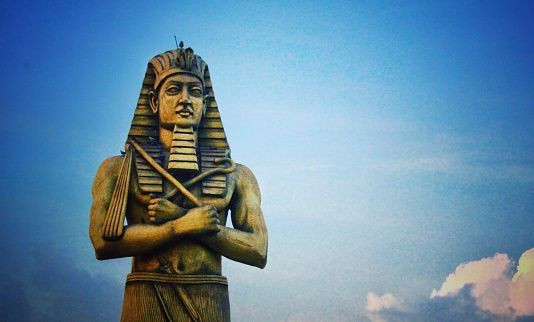Ancient Egyptian Pharaoh Could Be The First Known Giant

Sa-Nakht, an ancient Egyptian pharaoh, may have been the oldest known human giant, an August study published in The Lancet Diabetes & Endocrinology said. His mummified body was discovered in an Upper Egyptian tomb in 1901. Sa-Nakht lived around 2700 B.C.
Researchers from the University of Zurich reported Sa-Nakht’s bones showed signs of “exuberant growth,” indicating “clear signs of gigantism.” Gigantism is a disorder that occurs when the body over produces growth hormones during childhood. A person’s hands and feet grow first, then the forehead, jaw and nose follow.
Read: Tomb Of King Tutankhamun’s Wife’s Discovered? Ankhesenamun Lies Next To Her Second Husband
“The alleged Sa-Nakht probably had gigantism, truly being the oldest known palaeopathological case in the world. The fact that he was buried with honors in an elite mastaba-tomb, after reaching adulthood, suggests that gigantism at the time was probably not associated with social margination,” the introduction to the study reads. “While short people were much preferred in ancient Egypt, especially in the early dynastic period, we have no records that very tall people had any special social preference or disadvantage.”
The supposed remains of Sa-Nakht, a pharaoh of ancient Egypt, may be the oldest known human giant. https://t.co/85UVygQjEr pic.twitter.com/Ltu4ryZ5K8
— Live Science (@LiveScience) August 6, 2017
By studying Sa-Nakht's bone remains, scientists determined he was just under 6 foot 2 inches when most men stood about 5 feet 6 inches. Upon another examination of the remains and photographs of the bones, researchers found Sa-Nakht may have had one of the first known cases of gigantism disorder. Based on the studies of the remains, the experts reached near certainty the person had gigantism.
“Studying the evolutionary development of diseases is of importance for today’s medicine,” Michael Habicht, a researcher from the University of Zurich, said.
Read: Weird Archaeological Find: A Wooden Prosthetic Big Toe From Ancient Egypt
Sa-Nakht was five inches taller than Ramesses II, the next tallest recorded pharaoh. No other ancient Egyptian royal figures were recorded to be giants. Researchers said they cannot be sure if the remains, discovered in 1901, are actually Sa-Nakht’s.
In ancient Egypt, being tall held no significant meaning. Men of shorter stature were actually admired more, with members of society who had dwarfism held in high esteem by ancient Egyptians. Ancient Egyptian visual records showed dwarves in tomb paintings as well as other art forms. They also indicated dwarves were employed as personal attendants, dancers and entertainers. Some dwarves held important roles in households of prominent officials and were allowed burial sites in the royal cemetery.
© Copyright IBTimes 2025. All rights reserved.





















